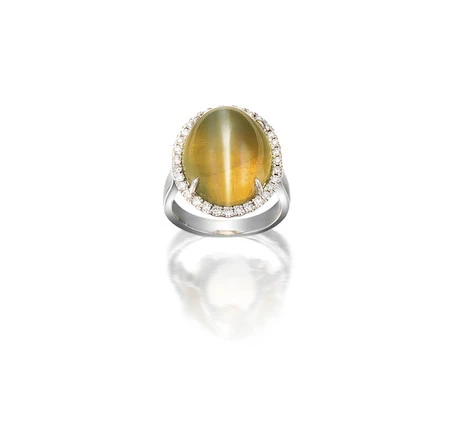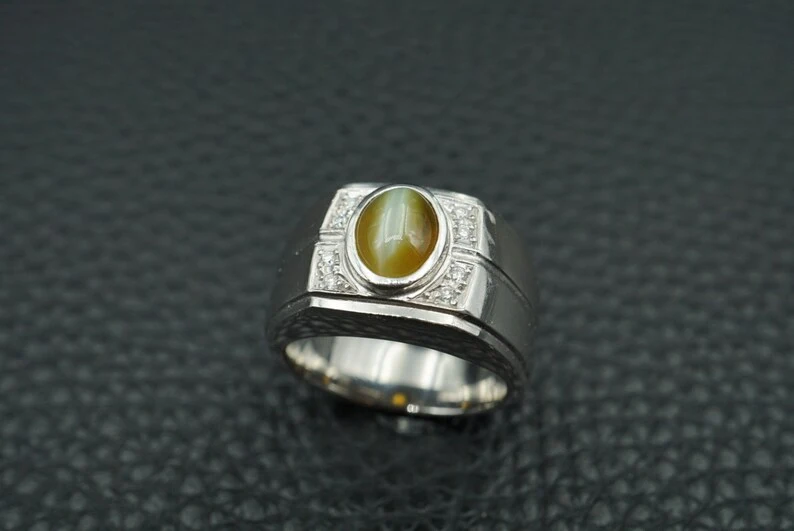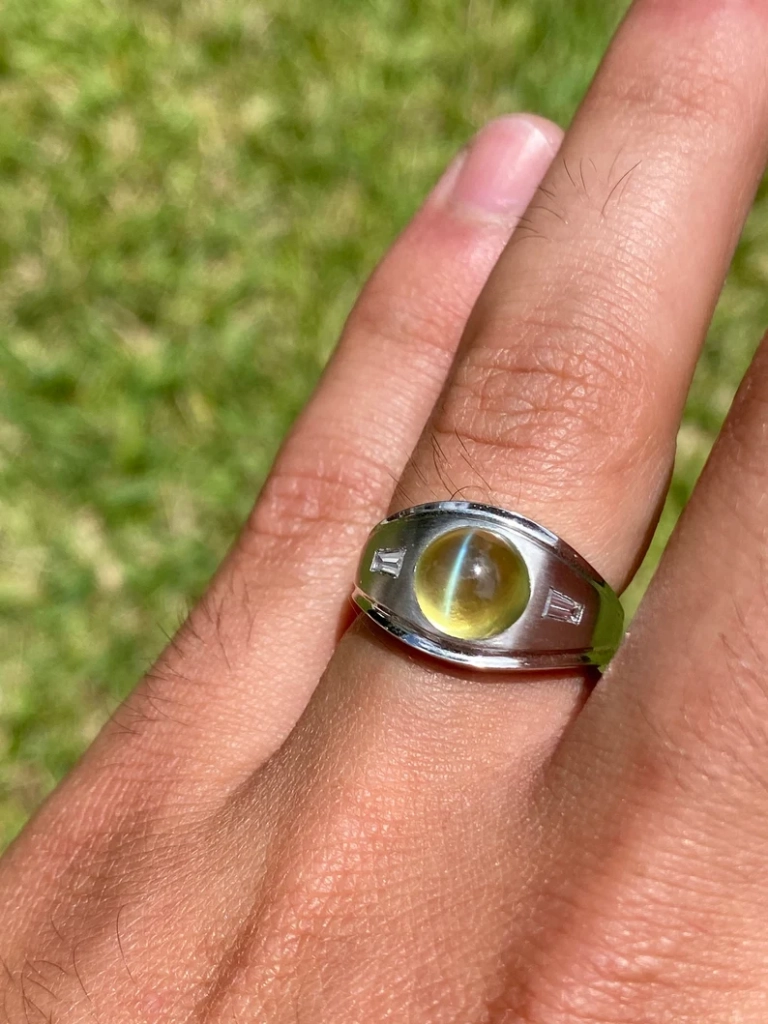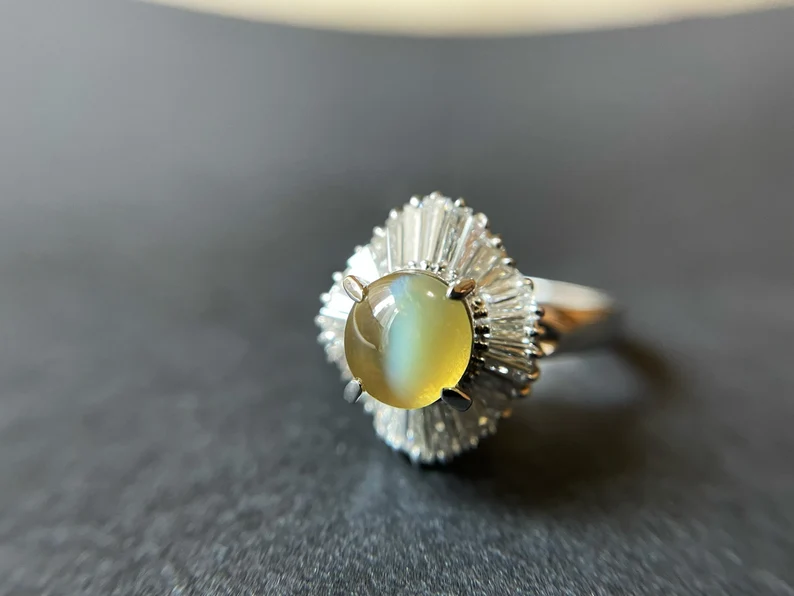I’ve got some chrysoberyl cat’s eye in, for the first time ever, some nice cabochons in a 3mm and 4mm round. I think that this is not the best known gemstone, and that’s partly because it’s pretty rare. The entire group, made up of transparent chrysoberyl, alexandrite and the cat’s eye variety is mined in very few locations making it very rare and very desirable. It’s a good stone choice, as it is both tough and hard, and just to remind you those are not the same thing – something may be hard but not tough – glass is fairly hard, but if you drop it, it breaks. Whereas something like putty is very soft but it’s tough – if you drop it, it just squishes a bit. Stones that are hard and tough, such as diamond, jade, chrysoberyl, make excellent ring stones as they can stand up to the harsher treatment rings can endure. As a gem group, it is a relatively recent discovery, between the 1780s to the 1830s, with Alexandrite named for the then Tsar, given it was discovered in Russia, and the two colours it displays are red and green, the then colours of the Imperial flag.
Chrysoberyl is the only chatoyant stone that is permitted to be called simply ‘cat’s eye’. The old name for it is Cymophane, which in Greek means ‘wavelike form’ which I think must refer to the way that the cat’s eye undulates across the stone. This chatoyancy is caused by parallel needles or tubes in the stone; light reflects off them, causing the ‘line’, and since the needles run all the way across the stone, this line will move as you turn the stone in the light.
Below, from left to right, you can see the simple beauty of this stone; The Bonham’s ring was sold at auction for around $38,000 USD, which gives you an idea of how much it can command. This is an exceptionally beautiful example; large, at 23 carats with a very sharp eye against an almost transparent golden body. I love the combination of the chrysoberyl with the sapphire in Evgad’s engagement ring, and what an unusual but effective choice; the blue of the sapphire brings out an array of cooler tones in the chrysoberyl. The stone also works well in chunky, streamlined settings such as the Gemsography men’s ring, right; the honeyed tones of the stone contrasting well with the blocky silver of the ring.



People often mention the ‘milk and honey’ effect when talking about chrysoberyl, and I confess, when I first learned about this, I didn’t really understand it. It isn’t something that necessarily photographs very well, but what it means is that, with good quality material you get a phenomenon whereby it appears as if the stone is different colours on either side of the cat’s eye. When I unwrapped these stones I literally cried out, as I could see it, plain as day! What you are looking for in best quality is a golden yellow semi-transparent yellow colour on one side of the eye, and a greenish or brownish yellow on the other. In real life it’s pretty striking. In terms of quality, as well as this ideal colour, you are also looking for a nice, sharp, silvery cat’s eye which stands out in relief to the bodycolour of the stone. This stone is found in fine quality in Sri Lanka but also in Myanmar, Brazil, Zimbabwe and Madagascar. Because of its durability it is popular in rings, cufflinks and probably because of its subtle colouring is a popular stone in men’s jewellery.
In looking at chrysoberyl jewellery, I’m finding alot of antique and Victorian jewellery; I think it must have been a popular choice due to its sober yet rich colouring. It is beautifully subtle, in an array of creamy golden to brown tones. Makes me think of dulce de leche, buttery and indulgent. Chrysoberyl is traditionally supposed to provide protection from the evil eye, and to help with decision making, that’s something I could certainly do with.
There’s another example of male jewellery with the Assay Jewellers ring, left, and I do like the effect of the two baguette cut diamonds running perpendicular to the cat’s eye. Another beautiful, stripped back design. But then I think that the Kardamome design, with its complex engraved design, oxidisation and added diamonds also looks awesome. I love the look of the stone against the black-gold of the metal; it looks almost ancient, medieval. And then finally, the Gem of Art ring, with the sunray baguette cut diamonds places the chrysoberyl within the rays of a bright star, the diamonds appearing to illuminate the stone, make it glow from within.



You can browse my selection of chrysoberyl cabochons here










